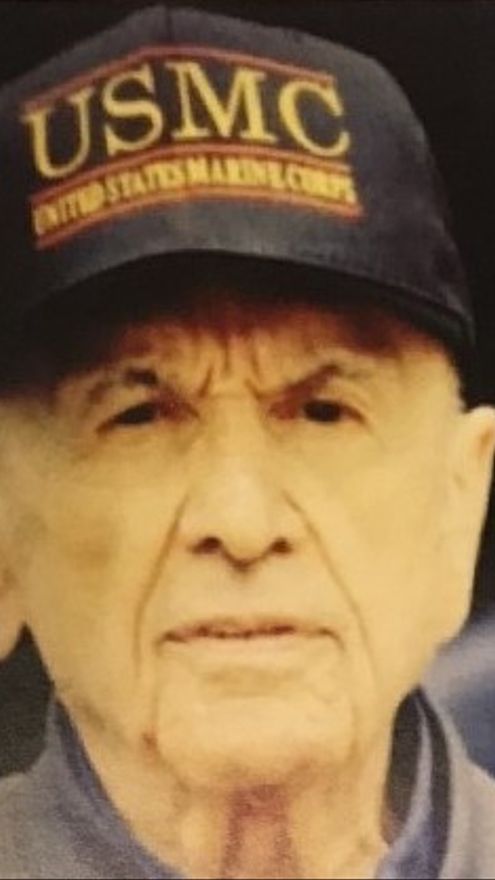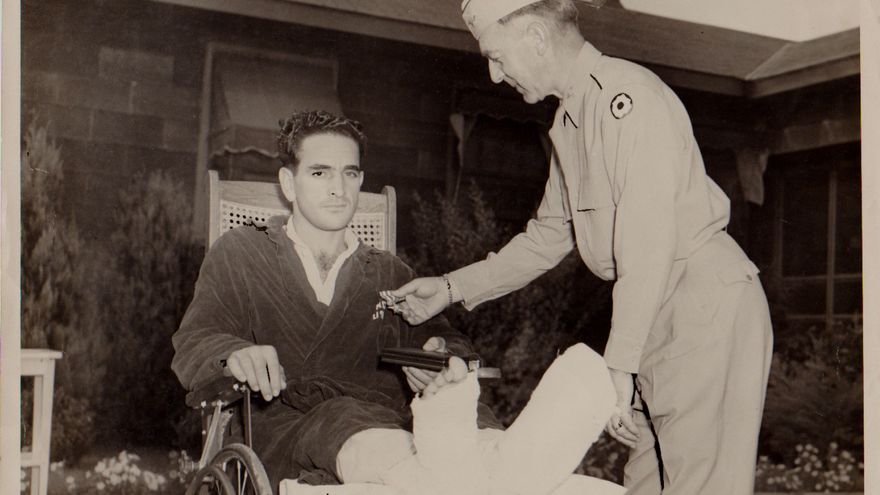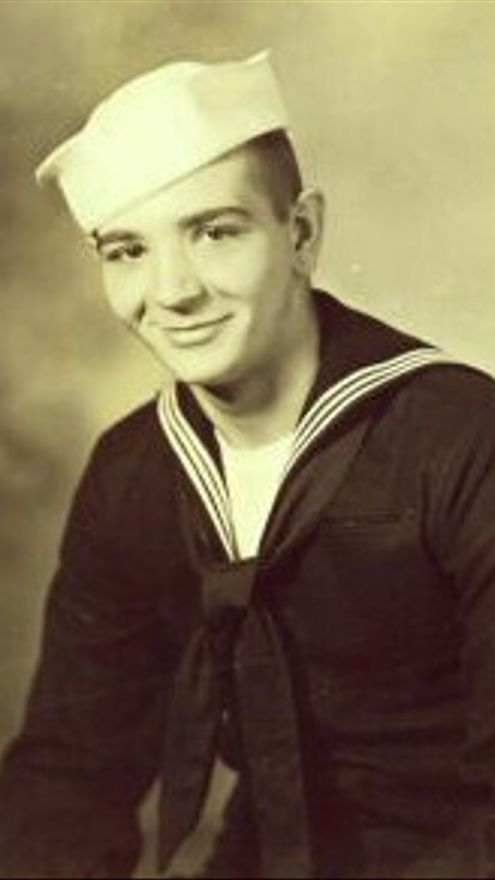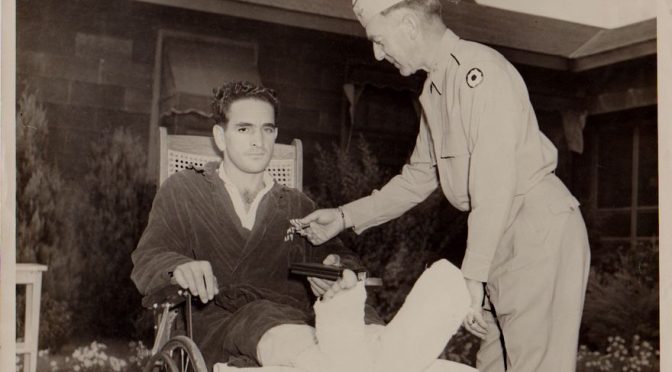This article originally appeared in Spanish at El Diario on October 23, 2019.
“Echoes of two wars, 1936-1945” aims to disseminate the stories of those Basques and Navarrese who participated in two of the warfare events that defined the future of much of the 20th century. With this blog, the intention of the Sancho de Beurko Association is to rescue from anonymity the thousands of people who constitute the backbone of the historical memory of the Basque and Navarre communities, on both sides of the Pyrenees, and their diasporas of emigrants and descendants, with a primary emphasis on the United States, during the period from 1936 to 1945.
THE AUTHORS
Guillermo Tabernilla is a researcher and founder of the Sancho de Beurko Association, a non-profit organization that studies the history of the Basques and Navarrese from both sides of the Pyrenees in the Spanish Civil War and in World War II. He is currently their secretary and community manager. He is also editor of the digital magazine Saibigain. Between 2008 and 2016 he directed the catalog of the “Iron Belt” for the Heritage Directorate of the Basque Government and is, together with Pedro J. Oiarzabal, principal investigator of the Fighting Basques Project, a memory project on the Basques and Navarrese in the Second World War in collaboration with the federation of Basque Organizations of North America.
Pedro J. Oiarzabal is a Doctor in Political Science-Basque Studies, granted by the University of Nevada, Reno (USA). For two decades, his work has focused on research and consulting on public policies (citizenship abroad and return), diasporas and new technologies, and social and historical memory (oral history, migration and exile), with special emphasis on the Basque case. He is the author of more than twenty publications. He has authored the blog “Basque Identity 2.0” by EITB and “Diaspora Bizia” by EuskalKultura.eus. On Twitter @Oiarzabal.
Josu M. Aguirregabiria is a researcher and founder of the Sancho de Beurko Association and is currently its president. A specialist in the Civil War in Álava, he is the author of several publications related to this topic, among which “La batalla de Villarreal de Álava” (2015) y “Seis días de guerra en el frente de Álava. Comienza la ofensiva de Mola” (2018) stand out.
In contrast to the public commemorations of D-Day in Normandy, the Mariana island of Saipan attracts little or no institutional or media attention, despite its strategic importance in the Pacific Ocean theater of operations and the significance it had in the becoming of the war itself. On June 5, 1944, prior to the European “D” Day, 71,000 US Marines and soldiers – nearly half the American force in Normandy – left Pearl Harbor, Hawaii, for the Marianas. Despite intense aerial bombardment flowing from 15 battleships for two days prior to the invasion itself, resistance on the ground was fierce. More than 3,400 American soldiers and about 29,000 Japanese soldiers died. Among the latter, an estimated 3,000 launched various suicide charges or banzai for 15 hours against American troops on July 7. To these figures must be added the 22,000 civilian islanders, the Chamorro people, who died as a result of the invasion, largely victims of a campaign of forced suicides incited by the Japanese military that was unparalleled until that moment in the Pacific campaign, civilians who already knew horrors of all kinds perpetuated by the fanatical Japanese troops. With nearly 10,000 wounded, the US suffered the largest losses to date on the Pacific front. In contrast, the European “D” Day witnessed some 4,400 casualties among Allied troops, of which about 2,500 were Americans. The conquest of Saipan by the American forces, between June 15 and July 9, 1944, became not only a military victory but also a moral one, despite the high human cost.

Among the Japanese military leaders who died in battle or chose to commit suicide is the general of the Japanese army and one of the highest authorities in Saipan, Chūichi Nagumo. Nagumo had supervised the attack on Pearl Harbor. He committed suicide on July 6 and his body was found by the Marines in a cave. The iconic and all-powerful Prime Minister, Minister of War, and Chief of Staff of the Imperial Japanese Army, Hideki Tōjō, was forced to resign on July 18. Tōjō had ordered the attack on Pearl Harbor. Final victory against the Japanese imperial troops seemed possible. The main islands of Japan were about 2,100 kilometers away and the new air bases of Saipan, together with those of Guam and Tinian (conquered in mid-August), allowed the Boeing “B-29” super fortresses, with a radius of action of 5,230 km., to attack the principle cities of Japan, including its capital, as part of a brutal napalm incendiary bombing campaign similar to that of Dresden (Germany) in February 1945. The most destructive air attack in history of humanity would occur over Tokyo on March 9. 40,000 square kilometers were razed and more than 90,000 civilians perished.
On its way to Japan, Iwo Jima became another strategic target for the United States. It was necessary to conquer the volcanic island as a supply and repair point for the “B-29s” on their long round trip between the main islands of Japan and the Marianas, and what was even more important: to ensure the protection of escort fighters. The bloody battle for Iwo Jima took place between February 19 and March 26, 1945. It became the most aggressive, overall, in the entire history of the Marine Corps. More than 6,800 Americans and approximately 20,000 Japanese soldiers perished in the fighting. Another 20,000 American soldiers were wounded, practically all the vanguard units being decimated. En route to the invasion of Japan there was only one obstacle left. Okinawa – the largest island of the Ryukyus and the southernmost of the main islands of Japan – was the last bastion of Japanese resistance before the eventual invasion of the country, and it was only 2,100 km away from Tokyo. The invasion of Okinawa began on April 1 and after almost three months of fierce fighting and tens of thousands of soldiers and civilians killed, the Allies won a decisive victory. It is estimated that between 30,000 and 100,000 civilians of the 300,000 inhabitants of Okinawa perished as a direct result of the invasion, re-enacting, but on a much larger scale, the atrocious scenes experienced in Saipan.

If in Normandy, we estimate that approximately fifty men of Basque and Navarrese origin participated in “D” Day under the command of the British and Americans, to date we have identified another 157 soldiers, enlisted in the Marines, Air Force, Army, and Navy, which participated in the Pacific Front. Considering that the investigation of the “Fighting Basques Project” is still ongoing, the final number could be much higher. Of these, at least about 60 were involved in the Mariana, Iwo Jima, and Okinawa campaigns.
Within the fleet that supported the invasion of Saipan with crew members of Basque or Navarrese origin, the heavy cruiser USS Indianapolis stands out, where the first-class radio operator Ernest Richard Bordagaray and the second-class administrative officer Alfred Arnaud Lapuyade served, participating in the invasion of Tinian; the destroyers USS Bell, with Lieutenant Raphael Antone Goñi on board, and who also participated in Guam and Okinawa, and the USS Izard with Lieutenant Ricardo “Richard” Ydoyaga (Guam, Tinian, Iwo Jima); and the battleships USS New Jersey (musician 2nd John Louis Facque), which in turn fought off Guam, Tinian, and Okinawa, the USS Idaho (gunner 1st Ralph Hirigoyen) (Guam, Iwo Jima, and Okinawa), and the USS Tennessee (second-hand gunner Joseph Thomas Goyeneche), who was also present throughout the Marianas campaign and the invasions of Iwo Jima and Okinawa.
Of the twenty Marines who fought on the Pacific Front and more specifically in Saipan, the soldier of Navarrese origin Lawrence “Larry” Michael Erburu, from the 4th Marine Division, stands out. He was mortally wounded in the course of the battle. Erburu is buried at the National Memorial Cemetery of the Pacific in Honolulu, Hawaii. As we have commented previously, after the occupation of Guam, the “B-29s” could carry out their missions over the skies of Japan with a greater degree of operability. Among them was First Lieutenant Julius Andrew Beterbide, who was in the 30th Squadron of the 19th Group. With five aerial medals, gunner Beterbide, born in Lovelock, Nevada, in 1917 to a Navarrese father and a mother from Lapurdi, also served in North Africa and Italy. Also flying in the “B-29s,” Lieutenant José Luis Beitia (Shoshone, Idaho, 1923), of Biscayan parents, had already been forced to land without an escort back from a mission to his base in Saipan. He did not reach it, although he was able to survive. Less lucky was the Nevada gunner Johnny Montero (son of Navarre and Lower Navarre parents), who crashed with his B-29 in the Himalayas (known to North American aviators as “The Hump” or “Hump”) when he was flying from his base in China.

In the preparation for the invasions of Iwo Jima and Okinawa, we identified Administrative Officer John Elordi aboard the battleship USS Wisconsin, Cook 2nd Class Emile J. Iratçabal on the destroyer USS Taussig, and Aviation Armaments Specialist 2nd Class Donald Dale Jauregui on the aircraft carrier USS Hancock. In Okinawa they were joined by the battleship USS Mississippi, where the First Class Sailor Edward Valentine Barrenechea was serving, and the escort carriers USS Shipple Bay and USS Makassar Strait, where the aviation lieutenant Raymond Jay Garteiz and the sailor Peter Paul Parisena sailed, respectively. Flying from an aircraft carrier (the USS Yorktown) in the Okinawa area and off the Japanese coast, we find Genty “Santi” Louis Harriet, pilot of an F-6 “Hellcat” fighter.
In the combat for Iwo Jima, Marine Corps 5th Division soldier Albert Philip “Al” Pagoaga was seriously injured, losing a leg. Pagoaga, whose parents were from Gipuzkoa, was born in 1925 in Boise, Idaho. Only 32 of the 200 men from Pagoaga’s company, the Easy Company of the 27th Marine Regiment, made it off the island alive. Amongst the marines taking the beaches of Iwo Jima and Okinawa was Ramón Isidoro Oyarbide (of Biscayan parents), a university student from Battle Mountain (Nevada) who served on the infantry landing craft USS LCI (L) 632. Soldier of the 17th Infantry Regiment, Dominique Laxague (of Navarrese parents), and the Marine of the 1st Division Lawrence Amoriza (of Biscayan parents), died in combat in Okinawa. Corporal Felix François “Red” Ordoquihandy (of Zuberoa origin – the Baretous valley to be specific), also of the 1st Marine Division, died in an accident after surviving two of the bloodiest battles in the Pacific, Peleliu and Okinawa. Rudolph Iglesias, of Biscayan parents, obtained the precious Silver Star in Okinawa as a platoon leader of the 1st Marines in Okinawa.

In the Philippines, where there was a large Basque colony, another Silver Star was won a sheepherder from Bedarona (Bizkaia) named Julián Aramburu Goicoechea, from the 33rd Infantry Division, while Higinio Uriarte Zamacona, a member of one of the Basque families of the island of Negros, became a prominent leader of the local resistance. The Battle of Manila (February 3-March 3, 1945) saw the total devastation within the walls of the splendid colonial city and the massacre of the Spanish community. The masses celebrated in the Basque communities of the western United States in memory of their relatives murdered in Manila by the Japanese occupiers are the only clue to many stories yet to be investigated, such as the one about the “Fighting Basques” battle tank that the very same Higinio Uriarte saw there.
The war ended in Europe on May 8, 1945, with the surrender of Germany. After a month of occupation of the island of Okinawa, the Allies asked Japan for its unconditional surrender on July 26. On August 6 and 9, the United States detonated two nuclear bombs on Hiroshima and Nagasaki, respectively. Japan surrendered to the Allies on August 15, 1945. The “B-29” bombers from which the atomic bombs were dropped had taken off from the island of Tinian. On September 2, the terms of surrender were signed aboard the USS Missouri in Tokyo Bay, “officially” ending World War II. Barrenechea (of Gipuzkoan father and Navarrese mother) and Hirigoyen (of origin Lower Navarrese), aboard the USS Mississippi and USS Idaho, respectively, were historical witnesses of the capitulation. Hirigoyen continued his military career and participated in the Korean War.
Only nine days apart, both the Normandy Landing and the Battle of Saipan marked a point in time before and after in World War II. Seventy-five years later, Saipan and the Pacific Front have been relegated to the background, without any political prominence or media coverage that could compete with their French counterpart. Saipan has gone down in history as the decisive battle of the Pacific offensive, but the passage of time has not been kind to this battle or the men who fought it. It has been unjustly overshadowed by the events commemorating the anniversary of Normandy in response to public policies of memory that serve the interests of the present more than the memory of the past. Without world leaders, without the global media, Saipan continues to inevitably fade into oblivion, perhaps in an effort by the Western powers, and more specifically the United States, to move away from a military front that forces them to confront the consequences of the use of nuclear weapons for the first time in human history.
Collaborate with ‘Echoes of two wars, 1936-1945.’
If you want to collaborate with “Echoes of two wars” send us an original article on any aspect of WWII or the Civil War and Basque or Navarre participation to the following email: sanchobeurko@gmail.com
Articles selected for publication will receive a signed copy of “Combatientes Vascos en la Segunda Guerra Mundial.”
Discover more from Buber's Basque Page
Subscribe to get the latest posts sent to your email.



Greetings,
thank you for posting this article. It is true about the monument of Normandy–like all war monuments, it serves the interest of the present more than the memory of the past. But, walking the aisles of the cemetery and before the look out and park was built, looking down into the cliffs of the landing–one can only imagine the horror it must have been. They were shot like fish in a fish bowl, unable to defend themselves because the Germans were up the cliff, shooting down at the Americans.
I stood on the memorial above the ship, the Arizona, in Honolulu , watching the oil still leaking from the Arizona to the surface of the ocean. Remembering the ravage of WWII–I don’t know how long I stayed there–someone came close to me to ask if I was OK.
We are still fighting now. When is it going to stop?!!!